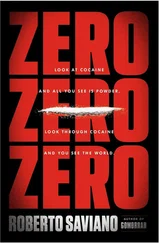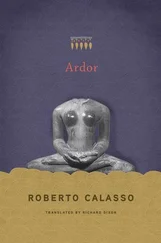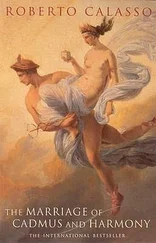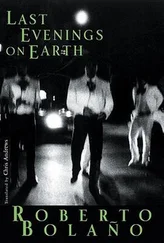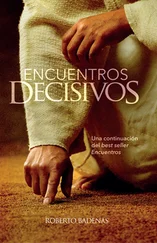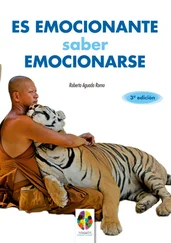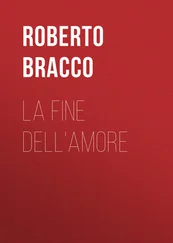If the fact that Josef K. can’t find the strength to stick the butcher knife in his own chest is a “final error,” then the trial, in its pure, ideal form, must have been plotting his suicide from the very start. But in all the key moments, Josef K. turns out to lack sufficient strength, either to remain awake long enough to listen to the revelatory words, or to perform, with his own hand, the resolving gesture. Thus his two executioners have the air of tenors or vaudeville extras. They are “fleeting improvised men,” Judge Schreber would have said, and serve only for that momentary task of plunging the knife into Josef K.’s body. If the order of the world were more perfect, they would be unnecessary. Josef K. would act alone. But would there be, in that case, a trial? Or wouldn’t the trial coincide with the act of creation, with that long suicide?
XII. The Stuff of Legends
For generation upon generation, the painters charged with painting the portraits of the court judges have passed down “rules that are numerous, varied, and above all secret.” The latest artist called on to apply them is Titorelli, a painter of mythological scenes with a penchant for heathscapes. As Reynolds painted the great ladies of his day in the attitudes of Diana or Minerva, so Titorelli paints a judge in the semblance of a goddess: the Goddess of Justice, of course. Though she could also be the Goddess of Victory, the artist notes. Or maybe even, after some final retouches, which Titorelli performs in Josef K.’s presence, the Goddess of the Hunt. She is depicted mid-chase, with wings on her ankles. Surely every jolt must unbalance those scales of justice. A blindfolded woman running: that’s what Titorelli is painting. More than a goddess, she’s a riddle, one whose solution isn’t clear. Is she solemn? Derisive? This is all we know for sure: the Goddess of Justice is visible at once, and the Goddess of the Hunt is the last to reveal herself. Does this, perhaps, foretell the court’s ultimate, esoteric meaning?
Josef K. and K. experience their decisive revelations while sitting on the edge of a bed: K. on Bürgel’s bed, Josef K. on Titorelli’s. Less important, but still significant, is proximity to a bed: Gardena beside K.’s bed in the maids’ room, K. beside the superintendent’s bed. Even the position one assumes on the bed is meaningful, as we can see from Titorelli’s behavior. It isn’t enough for him that Josef K. sit on the edge of the bed. Instead the painter “pushed him back into the eiderdown and the cushions.” Only when Josef K. is sinking toward the middle of the bed does Titorelli ask his “first actual question”: “Are you innocent?” And Josef K. answers: “Yes.”
The edge of the bed is the threshold of another world, and one must sink into that other world before the most essential, most direct question can be asked. Only in Titorelli’s studio, in that oppressive burrow, two strides wide in each direction, only in that stale air, can such words be uttered. And what Titorelli says now hasn’t been heard before. First: “The court can never be swayed.” If it has seen guilt, no one can persuade it that the guilt isn’t there. This is a valuable, if indirect, rejoinder to the declaration of innocence that Josef K. has just made. Second: the corrupt girls who play on the stairs and who guided Josef K. to Titorelli “belong to the court.” Indeed, the painter adds, “everything belongs to the court.” With his ceremonious, indifferent manner, and above all with these last words, added “half in jest, half in explanation,” Titorelli has offered Josef K. revelations that could carry great weight, if only he didn’t find them, thanks to his unshakable mistrust, “unbelievable.”
Josef K. already has an “opinion” about the court, even if he prolongs his captious interrogation in an effort to “uncover contradictions” in the painter’s words, and he too now has something to say about it, which, in its terseness, seems like a final judgment: “A single executioner could take the place of the entire court.” That executioner is death itself, which acts without consulting instructions or verdicts, just as the Goddess of the Hunt, whom Josef K. thought he recognized in the painting propped on Titorelli’s easel, strikes in the mazy forest without the authorization of any preliminary judgment. Josef K. has lucidly perceived that the court is the place where the Goddess of Justice and the Goddess of the Hunt blur into a single figure. Titorelli suggests that the Goddess of Victory can be seen in the same figure. But that’s a superfluous addendum. Victory, for the court, is a given for every moment of the world’s existence.
In the eyes of the manufacturer who first speaks to Josef K. about him, Titorelli is a postulant, “almost a beggar,” as every artist is, in principle. In Josef K.’s eyes he is first of all a “poor man,” precisely what he himself will seem in Titorelli’s eyes. And yet that “poor man,” thanks to his profession, is the only one who has direct access to the remote past, to the “legends.”
The subject of legends comes up when Titorelli is explaining to Josef K. that there are three types of absolution: “real acquittal, apparent acquittal, and protraction.” Titorelli knows of no case of real acquittal. But he knows that some real acquittals “are said to have occurred,” at least among the legal cases handed down in legend.
When they speak of legends in The Trial , they may as well be speaking of myth, a word Kafka doesn’t use here, perhaps because it brings in something superfluous or academic. The legends tell of judgments that are otherwise inaccessible: the court’s ancient verdicts, which “are not published.” This alone should render them valuable. An abyss, however, divides us from those legends. Certainly they are “very beautiful,” and one can even attribute to them “a kind of truth”—and here, rustling behind Titorelli’s words, we hear the age-old dispute over myth: Plato is watching us—“but they are not provable.” And what is a court if not the place where proof must be offered? Is it possible, then, Josef K. asks, “to appeal to such legends in court?” Of course not, the painter replies. He even laughs. A terrible laugh. The court is steeped in legends, right down to the portraits of its judges — and these legends are the only means of accessing a part of its history. If nothing else, they offer beauty and “a kind of truth.” But they can’t be utilized, and so, Josef K. concludes, “it’s useless to talk about them.”
This ferocious amputation has many consequences: above all, it becomes pointless to consider “real acquittal,” because real acquittal is treated only in the legends — and it’s useless to talk about legends. It’s as if the world agreed, with a simple gesture, to abolish a part of itself. And the only part, furthermore, where the adjective “real” is applicable. All the rest of the world, which soon will be considered the whole world, is divided up between “apparent acquittal” and “protraction.” Within that world things can be proved, but they may not be real. As for any acquittal that one might obtain there, it will certainly not be “real.” This brief exchange in Titorelli’s cramped, stifling studio, between two people who have just met, has a grave consequence: in the name of reality, reality is left aside. With the haste of a man who is after tangible results, Josef K. says at once: “Then let’s leave real acquittal aside.” What remains? Apparent acquittal and protraction. Only they have applications; only of them is it useful to speak. In the meantime, Titorelli asks Josef K.: “But don’t you want to take your jacket off before we discuss them? You must be very hot.” Josef K. agrees — and says: “It’s nearly unbearable.” He finds it nearly unbearable mainly because he has come too close to grasping the nature of his situation. Thus, just as he is getting ready to talk about what can be most useful to him, he has “the feeling of being totally cut off from air.” Here begins a brief, dense back-and-forth between him and Titorelli on air, fog, windows, heat, doors. In The Trial , any mention of windows or air or breathing is a signal — like a conversation about clothes in The Castle —that we have entered an intense, highly sensitive zone.
Читать дальше

